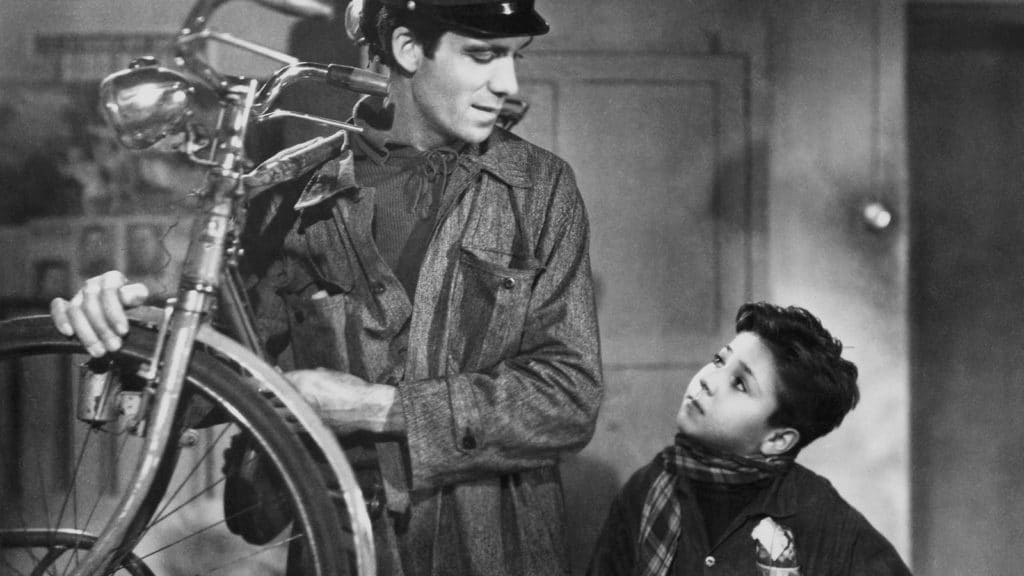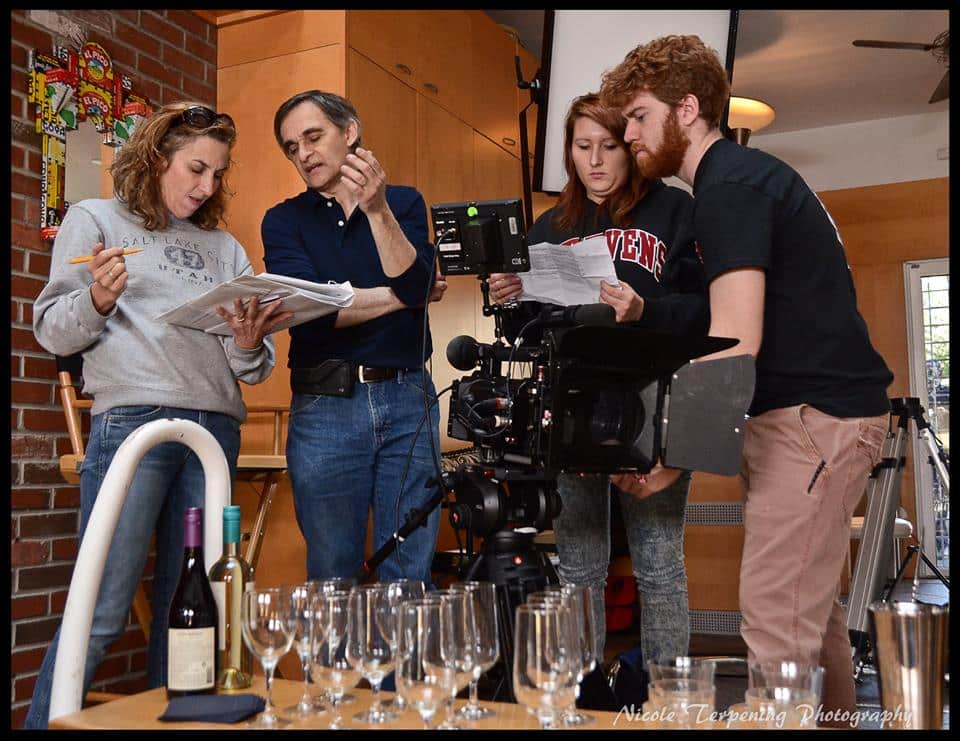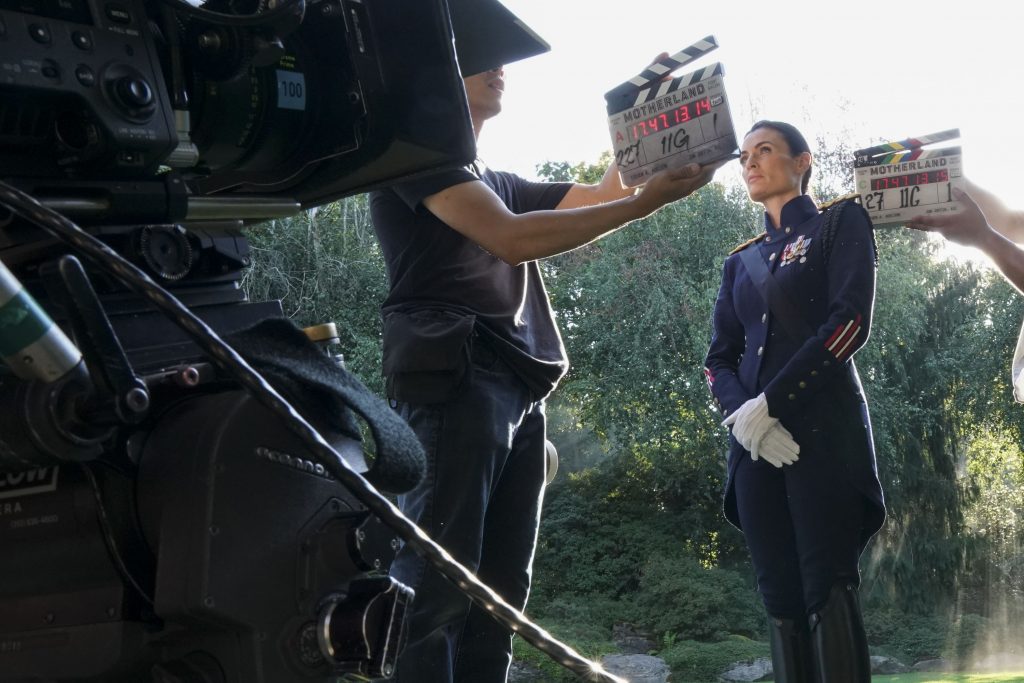by David Worth
The phrase, “new paradigm,” seems to be everywhere today in post production, in capture, in delivery, even in distribution. Exactly what is a paradigm? The dictionary defines it this way:
paradigm
noun
… a typical example or pattern of something; a model : There is a new paradigm for public art in this country. See note at model… a system or
thing used as an example to follow or imitate…
So a “new paradigm” is simply an example or model for a way of working, and as filmmakers we can see new models all around us everyday as we: capture using cutting-edge lightweight hand-held HD cameras; light using available light or the advanced palm-sized lighting panels, download our memory chips directly to the hard drive of our non-linear editing program; and edit – add titles, sound effects and mix on our laptop computer before we burn our own DVDs… That’s what we have as of today, but exactly where did it all start?
Many of today’s young filmmakers love to “run and gun and improvise,” and the same held true in the past, where each generation’s young Turks have been at the forefront in creating new paradigms. You can trace the roots of today’s independent filmmakers all the way back to the Italian Neo-Realists who began breaking the rules way back in 1945. Their country, their cities, their studios and their economy were all in ruins after World War II, so they were forced to go into the streets. They used natural locations, available light, non-actors and organic, episodic stories, in order to continue to make films and their films became a revelation that captured film audiences around the world with their bold and startling, new “Neo” realism.
Roberto Rossellini’s Rome, Open City, Luchino Visconti’s La Terra Trema, and especially, Vittorio De Sica’s Bicycle Thieves were at the time new paradigms that by the late 1950’s had influenced both The French New Wave, Francois Truffaut’s The 400 Blows and Jean-Luc Godard’s Breathless, as well as John Cassavetes’ Shadows, which became the first film of the American Independent film movement.
In Breathless, Jean-Luc Godard used an American star Jean Seberg and still shot without a formal script, without lights, without makeup and without sound. For a dolly, he actually pushed his Director of Photography, Raoul Coutard around the streets of Paris in a wheelchair. The film was an art house and film festival sensation.
In 1964, Beatle-mania took over the world and the films that helped to promote the Fab Four, A Hard Day’s Night and Help! were made by the young British commercial director, Richard Lester and contained the world’s first music videos… Editing to music opened up thousands of new non-linear possibilities, and by 1981, when MTV came online 24 hours a day there were literally hundreds of filmmakers from all over the world telling visual stories while promoting the latest pop or rock stars and using every possible experimental technique that they could imagine to grab the attention of their young audiences.
They used 8mm, 16mm, 35mm, black and white, and color film stock that they overexposed and underexposed, pushed and pulled, filtered and cross processed, strobe lit, candle lit, spot light lit and available lit, and all of these elements were often used in only one music video. The resulting popularity of these experiments in new paradigm filmmaking soon found their way into the world of TV commercials where they would often spend much more money on launching a new car or product than many an independent filmmaker used in making an entire feature film.
Ten years later in 1991, many of those MTV and commercial innovations finally made their way into an important big studio, big budget film, when the brilliant director Oliver Stone incorporated them into the production of JFK, his expose on the conspiracy behind the political assassination of John F. Kennedy. He and his Director of Photography, Robert Richardson used 8mm, 16mm, 35mm, black and white, color, videotape – often employing several formats all covering a scene at the same time in order to present all of the fact, fiction and cover-ups surrounding that treasonous event.
JFK was the beginning of today’s new paradigm in theatrical motion pictures and paved the way for a host of young independent filmmakers like Robert Rodriguez, Kevin Smith and Thomas Vinterberg of the Danish Dogme 95 movement. Then, by the end of the century, in 1999 a little film exploded onto the scene. It broke all of the rules of filmmaking, broke new ground by advertising and building a fan base on the Internet and broke box office records wherever it played. Of course, I’m referring to: The Blair Witch Project, directed by Daniel Myrick and Eduardo Sanchez.
What was so startling about this production was the fact that the two directors, chose not to direct. Instead they started another entirely new paradigm by removing the director and the crew from the daily process of making the film. The actors, decided what the location, the dialogue, the framing and shooting would be for each scene and opened the door for all of the “reality television” that we are seeing today.
If The Blair Witch Project did away with the director and the crew, in 2000, the director Mike Figgis, took another bold step with Timecode, by shooting the entire film in one 90-minute take with four camera crews, and then, doing away with the editing. The film was shot 15 times over the period of several weeks on natural locations with minimal lighting and with the actors improvising their characters each time. Finally, one of the takes was selected and presented on a four-part split screen with a jazz score, as Mr. Figgis did his final mix on the fly at each screening.
In 2002, the one-shot-take film achieved its pinnacle when the Russian director, Alexander Sokurov used the Hermitage Museum in Saint Petersburg, over 800 costumed and made up extras and several orchestras to shoot Russian Ark. This astounding undertaking traced over 300 years of the famed Winter Palace’s history while following a “narrator” as he gives the audience a tour of the fabled characters, grand halls and ball rooms. It must be mentioned, however, that the real hero of that production was the cinematographer Tilman Büttner who managed to perform the amazing marathon-like, one-shot, 90-minute steady-cam take.
A great year for the new paradigm was 2002, since it also produced Danny Boyle’s remarkable, 28 Days Later. The “must see” element of that scary film was the totally deserted streets of London. This feat could only be achieved by being able to hold the incessant traffic for only a matter of minutes. Since multiple 35mm cameras could not be set up in such a short amount of time, the entire film was shot on half a dozen Cannon XL1 home video cameras, by the extraordinary Danish Director of Photography, Anthony Dod Mantle. The sheer audacity of using home video on an over ten million dollar horror film that went on to gross over eighty million dollars. New paradigm indeed!
There are many more recent examples that are now happening on a world-wide basis and that are even insinuating themselves into the main stream with features like Once and Slumdog Millionaire garnering Academy Awards.
Now the ball is in your court. Thank you for taking the time to look back at some of the visionary films and filmmakers who have paved the way for everything that is possible today. Now, it’s up to you. You are the next generation of young Turks, of innovators, of new genre-imagining, young filmmakers who can do away with the old and usher in the new.
I look forward to the bold and startling films that you will surprise the world with… Make Movies, Not War!
David Worth has a resume of over thirty feature films as a Director of Photography and Director and has worked with talents like Clint Eastwood, Jean-Claude Van Damme, Shelly Winters, Roy Scheider, Dennis Hopper, Sondra Locke and Bruce Campbell. He has taught filmmaking at Chapman University, USC and at Chapman Singapore where he also lectured at the NYU Tisch Asia campus. He is presently teaching at his Alma Mater, UCLA. His first textbook, The Citizen Kane Crash Course in Cinematography, was published in 2008 and is available at www.amazon.com. David’s website is www.davidworthfilm.com.





